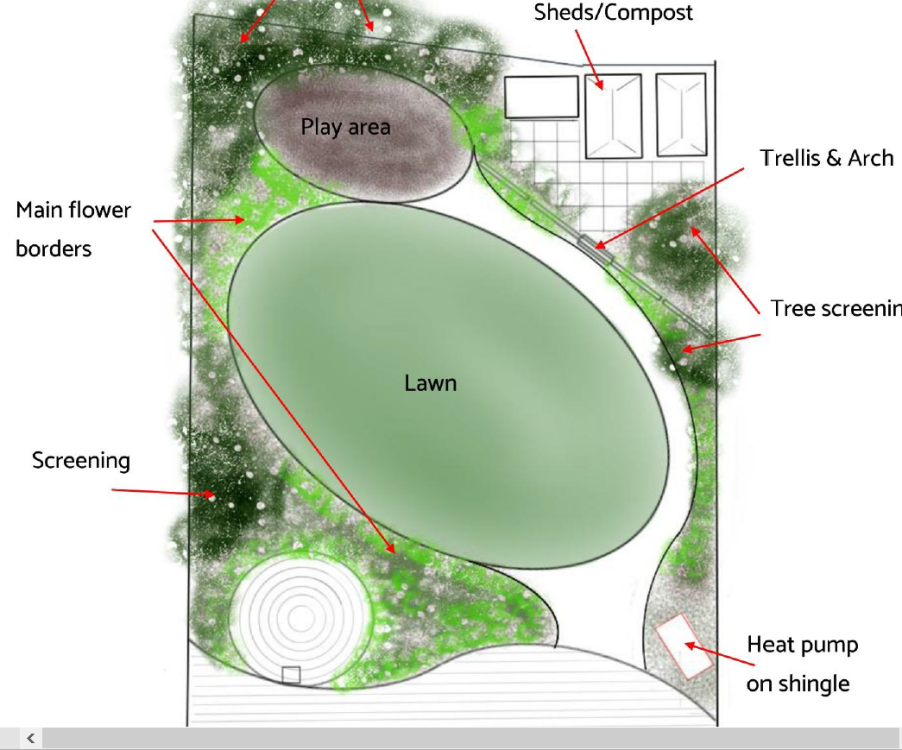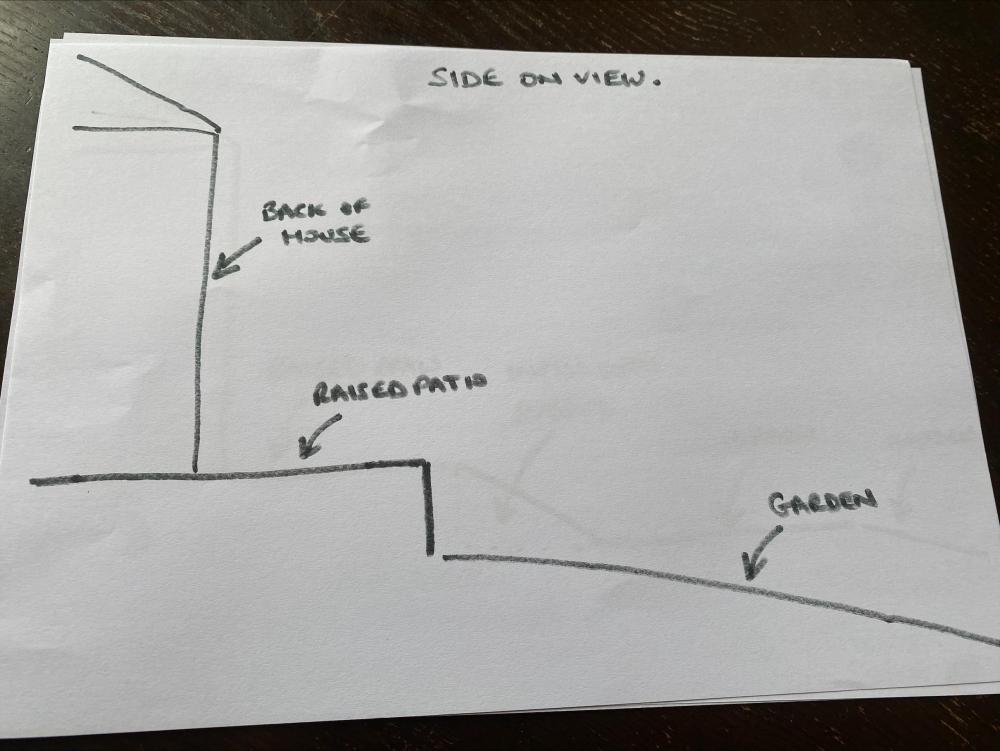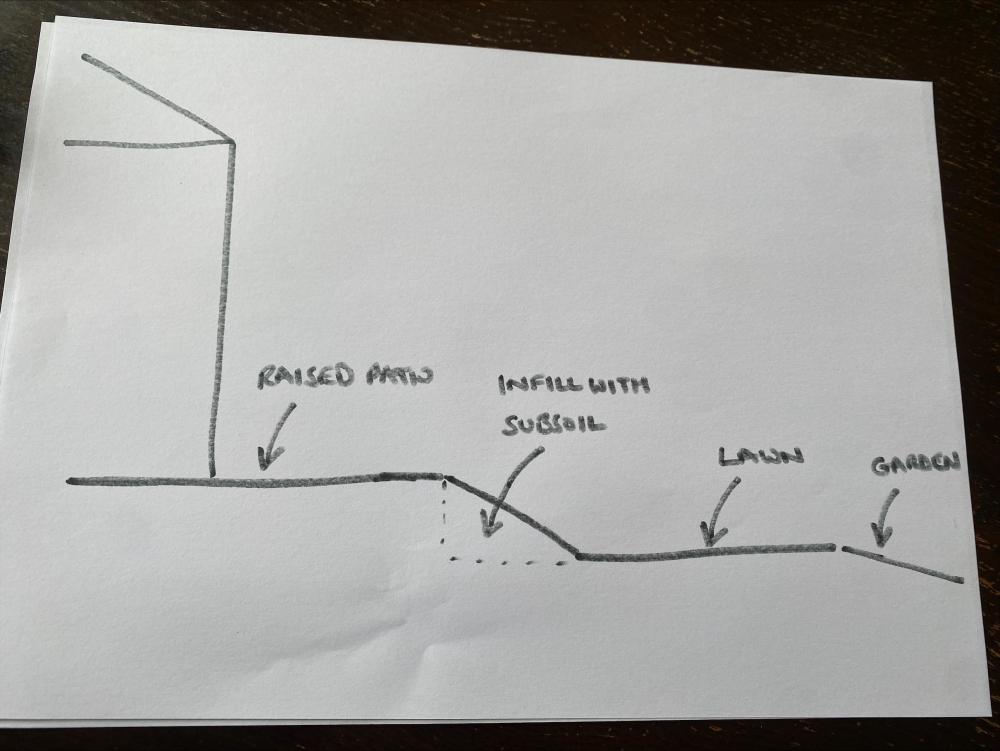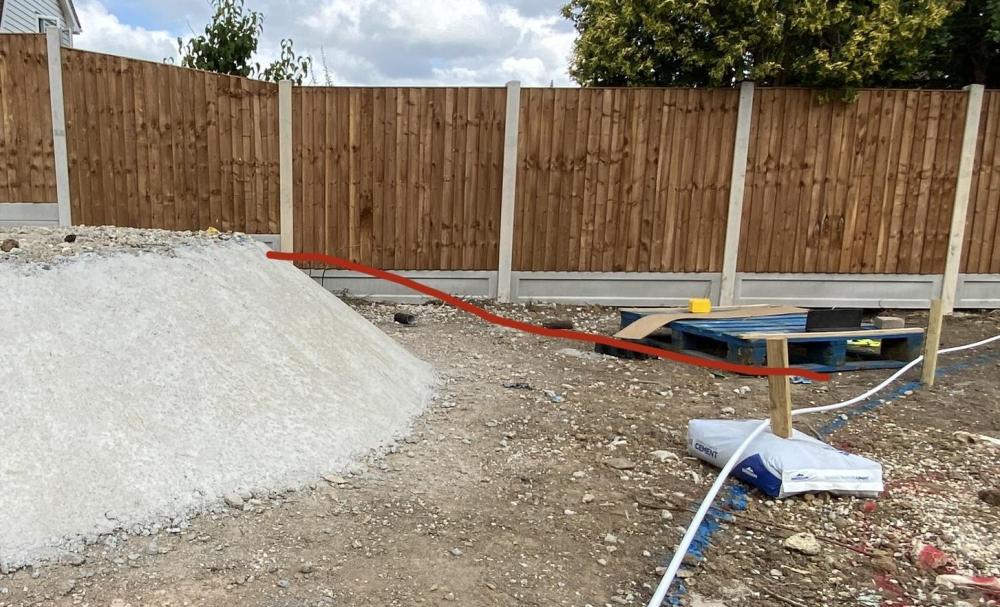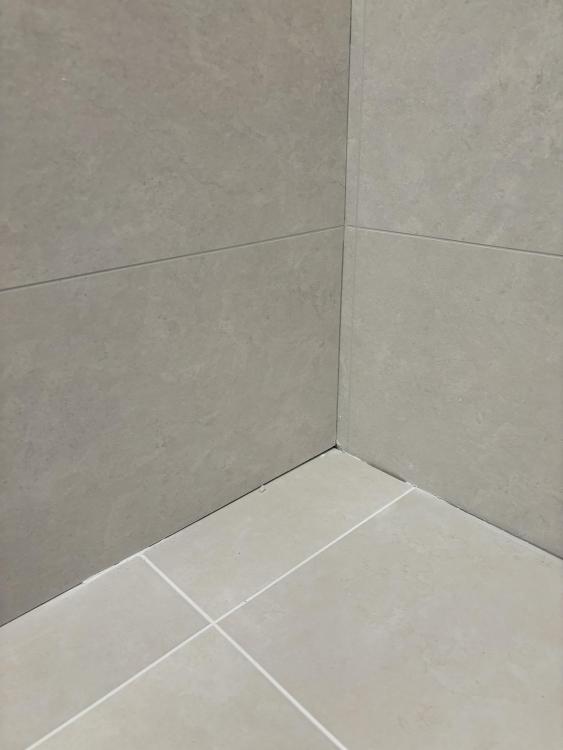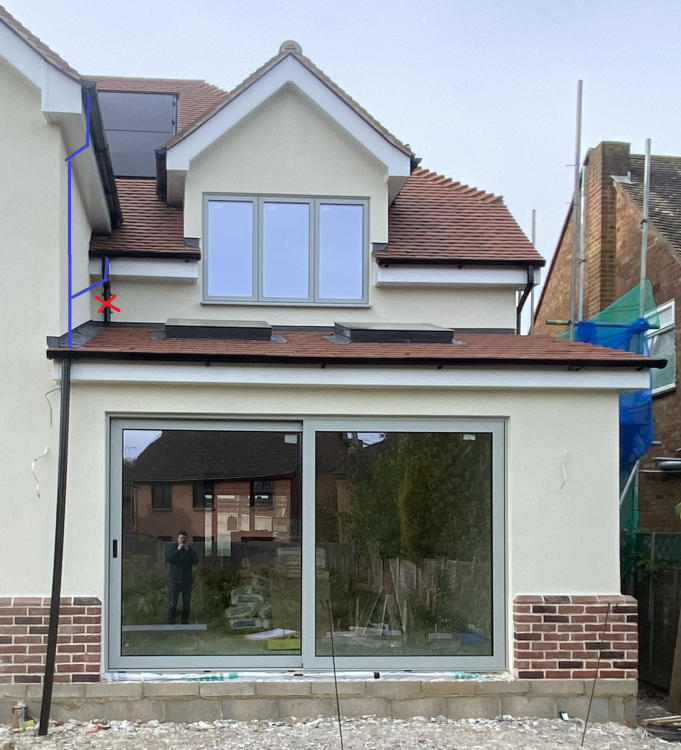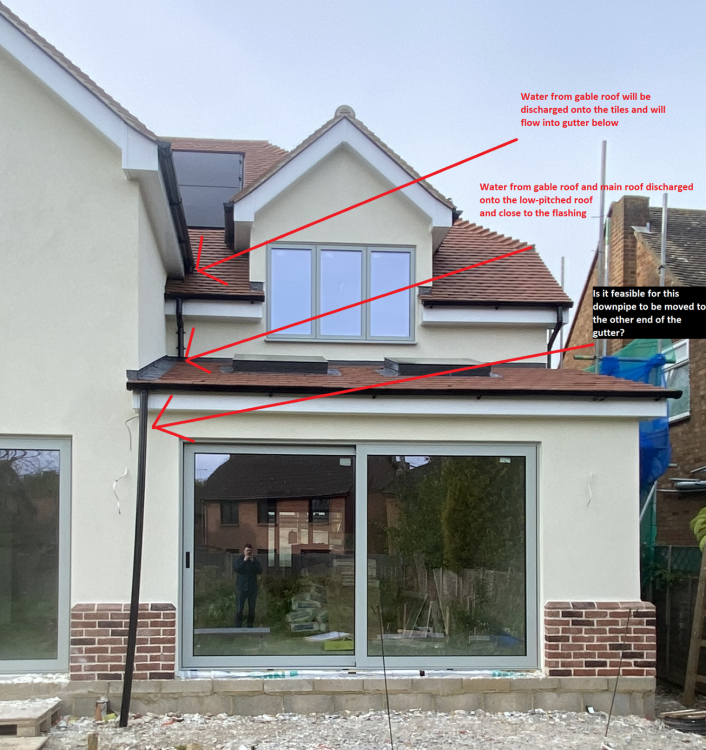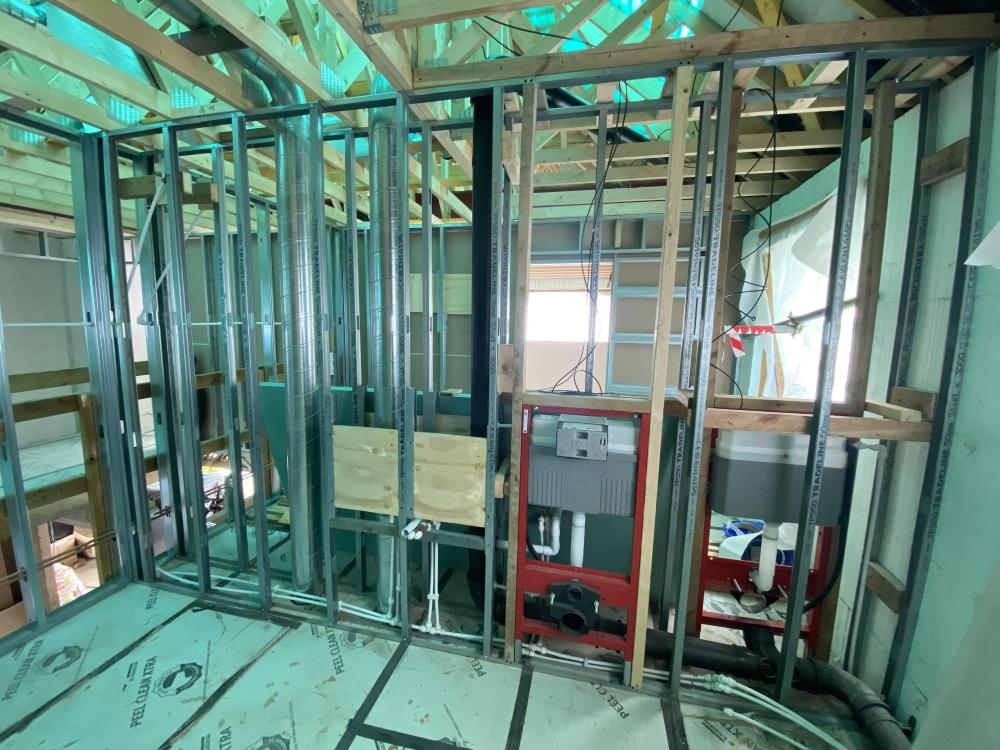
Selfbuildnewbie
Members-
Posts
52 -
Joined
-
Last visited
Recent Profile Visitors
The recent visitors block is disabled and is not being shown to other users.
Selfbuildnewbie's Achievements

Member (3/5)
3
Reputation
-
Best approach to retain raised patio
Selfbuildnewbie replied to Selfbuildnewbie's topic in Landscaping, Decking & Patios
@Mr Punter There is a slope/steps down from the patio to the lawn and lower parts of the garden. It will be behind where I was standing when I took the photo. If I leave the concrete as is, then we'll just infill above that with soil to create the sloping flower bed down to the lawn. The concrete won't be seen. They did the concrete without discussing with us so, if there is a strong reason why we should do gabions or other vertical retaining wall, then I'll go back to them and see if we can retrace steps to do it properly. But if this concrete is sufficient and will hold long term then I'll probably leave it at this point as it'll be hidden once we infill with soil. This is a birds eye view of what we are trying to achieve. When I took the photo i was standing roughly where the garden path meets the lawn, facing the circular patio -
Best approach to retain raised patio
Selfbuildnewbie posted a topic in Landscaping, Decking & Patios
So our house is done and we've moved on to the back garden. The house is on a hill which slopes down away from the house, and from right to left as you look at the garden. The back of the house is elevated above the garden. We wanted a patio/seating area directly outside the back of the house, without steps and trip hazards, so a raised patio has been created using Type 1 so that it's flush with inside floor levels. The only issue is that this has exarcabated the extent of the fall from the patio to the rest of the garden, and with toddlers and elderly parents, we don't want any drops off the patio (and we don't want building control to come along and require us to put in railings). The solution to this was to (a) increase the level of the lawn slightly so that the garden more gradually steps down and (b) run a sloped flower bed from patio level to lawn level. How should we be retaining the hardcore for the raised patio? I came back from a few days away and the groundworkers have used concrete to retain the hardcore (referred to it as concrete batter...). See picture below. Is that going to hold in the long run or should I be insisting they retrace their steps and put in a vertical retaining wall with gabions or concrete blocks? I want to be pragmatic at this stage but obviously don't want my patio collapsing at a later date! Side on view as currently is: The plan (raise lawn height slightly and have sloping flower bed from patio down to lawn) What they've done to retain the hardcore (added concrete to slope to stop hardcore slipping). Below the red line with be infilled with subsoil + topsoil to create sloping border down to the lawn. Lawn level will be roughly half way up the wooden posts. -
Grout color - am I seeing things?
Selfbuildnewbie replied to Selfbuildnewbie's topic in Bathrooms, Ensuites & Wetrooms
I’m sure this will go down like a lead balloon - but it’s above eye height so hopefully you’ll eventually forget it’s there looks lovely though! -
Grout color - am I seeing things?
Selfbuildnewbie replied to Selfbuildnewbie's topic in Bathrooms, Ensuites & Wetrooms
Skinny tiles, you’re right. To be honest I didn’t spot them from standing so didn’t question it. -
Grout color - am I seeing things?
Selfbuildnewbie replied to Selfbuildnewbie's topic in Bathrooms, Ensuites & Wetrooms
I’ll try this, thank you -
Grout color - am I seeing things?
Selfbuildnewbie replied to Selfbuildnewbie's topic in Bathrooms, Ensuites & Wetrooms
I’ll try this, thank you! -
The mastic man is here this week which means the bathroom floors have finally been uncovered…..to reveal grout on the floor which looks a totally different color to that on the walls! Eugh, we thought we were getting so close to the end! The tiler swears he used the same grout color for both the wall and floor - I’m super skeptical to be honest (see picture). We also chose a slightly lighter grout for the other bathroom, and mistakes happen. Anyway, he says the difference is due to the wall tile being ceramic and the floor being porcelain. The tile shop says the difference is due to the light. I think it could (possibly, maybe, if you really squint) be a combination of light and the gaps between the tiles. Can anyone hazard a guess as to what reason could be true, and how it might be reasonably improved. Current best suggestion is to just buy a few more shades of grout and trial them until we get a reasonable match and ask the tiler to come back and see if he can scrape the top layer and re-do. It really does look terrible! Many thanks
-
Our downpipes and guttering have been installed and I have some concerns about water being discharged directly onto the low-pitched roof, especially during heavy rain. The rain from the gable roof (to the left) and the main roof where the solar panels are, which collectively are quite a large area of roof, is going to flow into the small length of guttering to the left of the dormer. Then there's a small downpipe discharging from that gutter onto the low-pitched roof, close to the flashing and the rooflights. And then down the downpipe to the left of the sliding doors. I can see this causing us issues over time - rain overflowing the small gutter to the left of the dormer, splashing on the render, leaks in our low-pitched roof and rooflights, potential overflow of the gutter at the bottom, and damage and staining to the tiles where a lot of water is running over them. I have so far come up with two options: Option 1) Install the blue downpipe to take water directly from the gable roof down to the lower gutter. Replace the small downpipe with a 45 degree pipe that connects into the vertical downpipe. This would avoid the low-pitched roof entirely but it would look a bit unsightly. Option 2) Don't install the downpipe from the gable. Instead, run downpipe extenders on top of the pitched roofs to take the water directly from gutter to gutter. Like this: Should You Connect Gutters Between Floors? Gutters Guide (mygutterpro.com) Are there any other solutions? My second question: Is it feasible for the existing downpipe to the left of the sliding doors to be moved to the far right hand side, so that I can tuck it away down the side of the house. In other words, is it going to be OK for the water to go into the left hand end of that gutter, travel along the guttering over the sliding doors and then down the other side. (Possibly a silly question but I'll ask it anyway!)
-
We are midway through our build and have started adding the plasterboard etc so quite a way along and airtightness has been an afterthought. Before we finish boarding up, I just want to get a sense of whether what we're doing is sufficient or whether there is anything else we should be doing that would significantly improve the airtightness (at this stage, I don't want to do things that would only give little gain) What we have done / are planning to do: We are adding OSB boards to the underside of the first floor ceiling and sealing all joins with expanding foam. We're then painting the entire ceiling with Passive Purple paint to form the airtight membrane. We're going to lap the passive purple paint onto the external ICF walls to ensure airtightness where the first floor ceiling meets the external walls. Compression glands have been installed around cables as they pass through the heads of studs. I don't think we can easily apply passive purple paint around these glands on the underside of the ceiling because the internal stud partitions are in the way, so is it worth us applying purple paint on the cold side of the attic? We haven't done anything about airtightness around the spot lights in the first floor ceiling - what would people suggest? On the ground floor, the gap between the screed and the external walls has been filled with expanding foam, which has been cut off flush and then sealant applied to form an airtight seal. Do we need to go any further and apply passive purple paint as well to this wall/floor join or is foam and sealant sufficient? The same goes with penetrations through the screed for services and drainage. We've applied foam and sealant. Does this need anything else? Airtightness tape will be installed around windows. Again, it's been suggested to us that we apply passive purple paint on top of the tape but not sure whether this would give much added benefit? Anything else we should be doing?
-
Retrofitting airtightness membrane
Selfbuildnewbie replied to Selfbuildnewbie's topic in Heat Insulation
@Redbeard this is the best pic I have. Trusses up and metal studs in but not plasterboard yet - that's going in this week. Sounds like fitting membrane round the studs with lots of tape will be the way forward - was just wondering if there was an easier or better way What's the passive purple stuff? Airtight paint? Presumably you're suggesting just around the studs where we've cut the membrane and used tape, rather than painting the whole membrane? -
Build is coming along nicely. Currently nearing end of first fix. And then we've realised that we should have put an airtightness membrane in at first floor ceiling level. Too late now that stud walls and services are in. Any ideas on what is the best approach to retrofit a membrane? or another approach to getting airtightness? Building with Nudura ICF in case that's relevant.
-
FFTP/Openreach/new building regs
Selfbuildnewbie replied to Selfbuildnewbie's topic in Networks, AV, Security & Automation
Thanks, we actually did this prior to our initial notice being submitted for building control, but assumed for them to be able to sign off at the end we would need to prove that something else had been put in place. Will speak to them again. in other news, they’ve just started installing full fibre free of charge on the next road to us 🙄 -
FFTP/Openreach/new building regs
Selfbuildnewbie replied to Selfbuildnewbie's topic in Networks, AV, Security & Automation
the regs say that if the total cost including VAT exceed £2k (which is the case for us) then we don’t actually need to install FTTP fibre for now but we can instead install “gigabit ready infrastructure” (by which I think they just mean ducting?) from the house to the road and then we can just pull through a copper cable and use “normal” broadband for now. what we can’t work out is how to get hold of that ducting from openreach without paying them the £2k for the full FTTP connection. Seems We can only speak to someone at openreach if we accept a contract to install FTTP and pay the £2k. Very frustrating!

